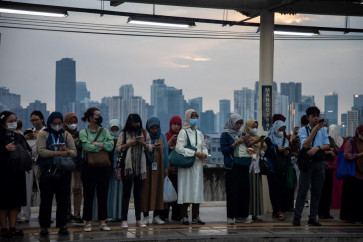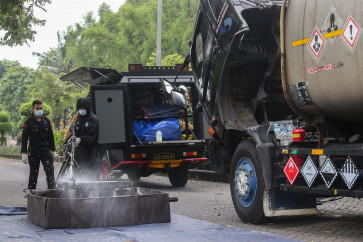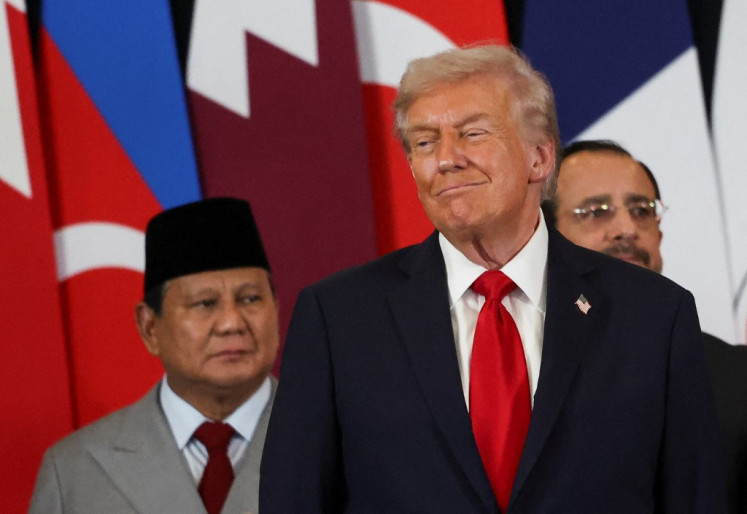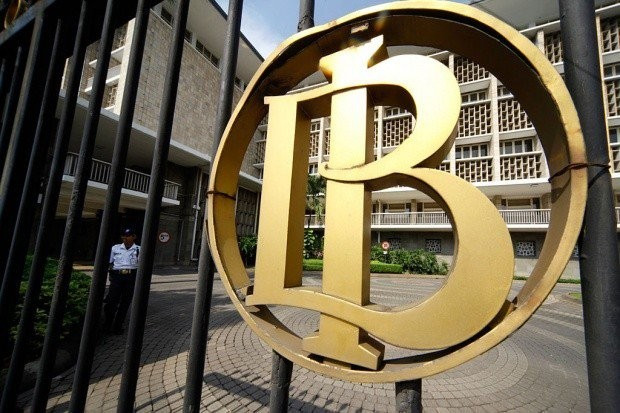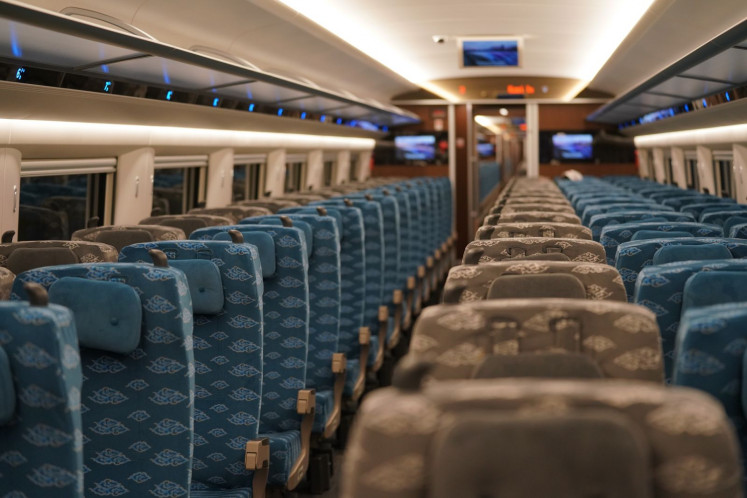Popular Reads
Top Results
Can't find what you're looking for?
View all search resultsPopular Reads
Top Results
Can't find what you're looking for?
View all search resultsMore people shift to cashless lifestyle
Carrying out daily transactions has never been easier for Dundhee Yuwono, a 29-year-old in Surabaya, as he only needs to open a digital wallet on his smartphone to make payments
Change text size
Gift Premium Articles
to Anyone
Carrying out daily transactions has never been easier for Dundhee Yuwono, a 29-year-old in Surabaya, as he only needs to open a digital wallet on his smartphone to make payments.
“I have gone days where I spend no cash since I’m able to pay for everything via my phone [using mobile payment]. From paying for transportation, buying food and purchasing other stuff, all using a cashless payment system,” Dundhee told The Jakarta Post recently.
Dundhee, who said he went cashless most of the time, is utilizing a wide variety of cashless payment options such as Go-Pay and OVO, to a debit card and e-money card.
Meanwhile, Fina Ladiba, a digital planner working in Jakarta said she was confident about not holding cash as most of the goods and services she needed could be paid for through a cashless payment system. She also uses numerous payment options and instruments.
“With payment options like Go-Pay and OVO, I have become more cashless. At first, I used cashless payment options for transportation needs and because they offered many promotions but now I’ve gotten used to paying for everything without cash as it is simpler and easier,” said Fina, adding that she paid for food, groceries and her bills through cashless payment systems.
According to a study on consumer payment by Visa Worldwide, Indonesians have become more aware of cashless payment benefits. Visa Worldwide Indonesia president director Riko Abdurrahman said the wide variety of cashless payment options had made Indonesians more confident in going cashless.
“Leading a cashless lifestyle is becoming easier and more attractive due to the numerous payment options available such as card payments, contactless payments and QR payments. Consumers are demanding a faster, more convenient and more secure payment experience,” said Riko recently.
The surging confidence of Indonesians is also indicated by the rising number of people (82 percent) who said they did not bring cash when going out. The figure was double the 42 percent of respondents who claimed the same in 2017’s study. The study also shows that 93 percent respondents were aware of and comfortable in making payments on their mobile phones.
“People are now more confident without cash. This makes sense as there are many basic daily transactions that can be made through cashless payment options, from paying a toll, parking fees, paying for a meal when eating at restaurants and many more,“ said Riko.
The study also shows that 77 percent of Indonesians expected their use of cashless payment options to increase in the next 12 months. Forty-one percent were also confident that Indonesia would become a cashless society within the next three years, up from the 2017 study when 15 percent of respondents thought that way.
The cashless campaign was launched for the first time by the government in August 2014 as an effort to make Indonesia a less-cash-society (LCS) country and within five years. Data from Bank Indonesia (BI) indicates how the cashless payment culture is rising as the volume and nominal transaction of e-money has seen a significant increase.
In 2018, BI recorded Rp 47.19 trillion (US$3.32 billion) in e-money transactions, up significantly from Rp 12.37 trillion in 2017 and Rp 7.06 trillion in 2016. E-money transaction value stood at Rp 5.28 trillion in 2015 and Rp 3.31 trillion in 2014. In general, there are two types of e-money, namely chip-based, such as an e-money card, and server-based with a mobile e-wallet.
As of today, there are 24 e-money issuers from nonbank institutions and 12 issuers from banks, BI data shows. The number of e-money users from nonbank issuers has reached 113.5 million, while bank e-money users number at 60.3 million.
One of the market leaders of cashless payment systems among non-bank institutions is PT Dompet Anak Bangsa (Go-Pay), the digital payment exists in ride-hailing app Go-Jek. Go-Pay corporate communications head Winny Triswandhani said Go-Pay had experienced rapid growth in users, transactions and number of merchant partners since it was introduced in April 2016.
“Go-Pay has seen very rapid growth and even during 2017 — 2018, we saw a 90 percent increase of active users. A notable factor that drove our significant growth was when Go-Pay could also be used to pay for things outside of Go-Jek’s services. Go-Pay can be used to make payment at merchants, such as to buy coffee at a cafe, in e-commerce, even at small merchants,” Winny told the Post.
As of March, Winny said Go-Pay had partnered with 360,000 merchants, of which 126,000 were small and medium enterprises, such as street food vendors. Payment through Go-Pay is also entering 40 markets across Indonesia.
BI’s payment system policy department head, Filianingsih Hendarta, said despite the significant growth of e-money users, the penetration of cashless payment systems had ample room to grow.
“Compared to other countries, such as South Korea, Australia, the United Kingdom, we have room to increase our cashless payment penetration. In Indonesia, the uses of payment using a card, e-money and digital was still under 25 percent in 2018, while other countries have reached above 60 percent,” said Filianingsih , while revealing that countries such as South Korea had reached 86 percent cashless penetration in 2018, while Australia had reached 63 percent.
The government aims to boost QR payments. Fillianingsih said QR code technology was more efficient and flexible, with transactions carried out through a mobile phone, suitable for Indonesia, where there are 80 million smartphone users.


